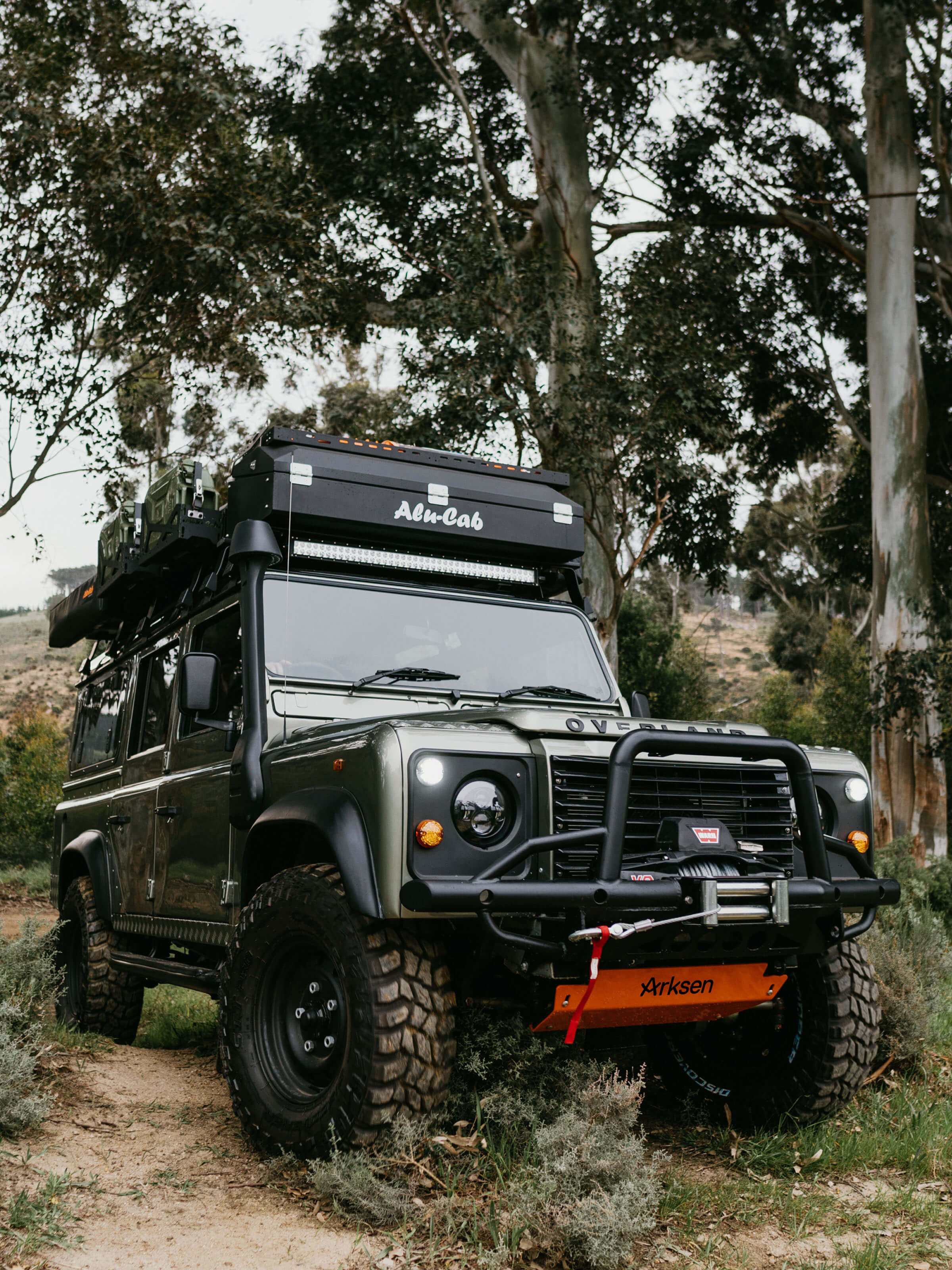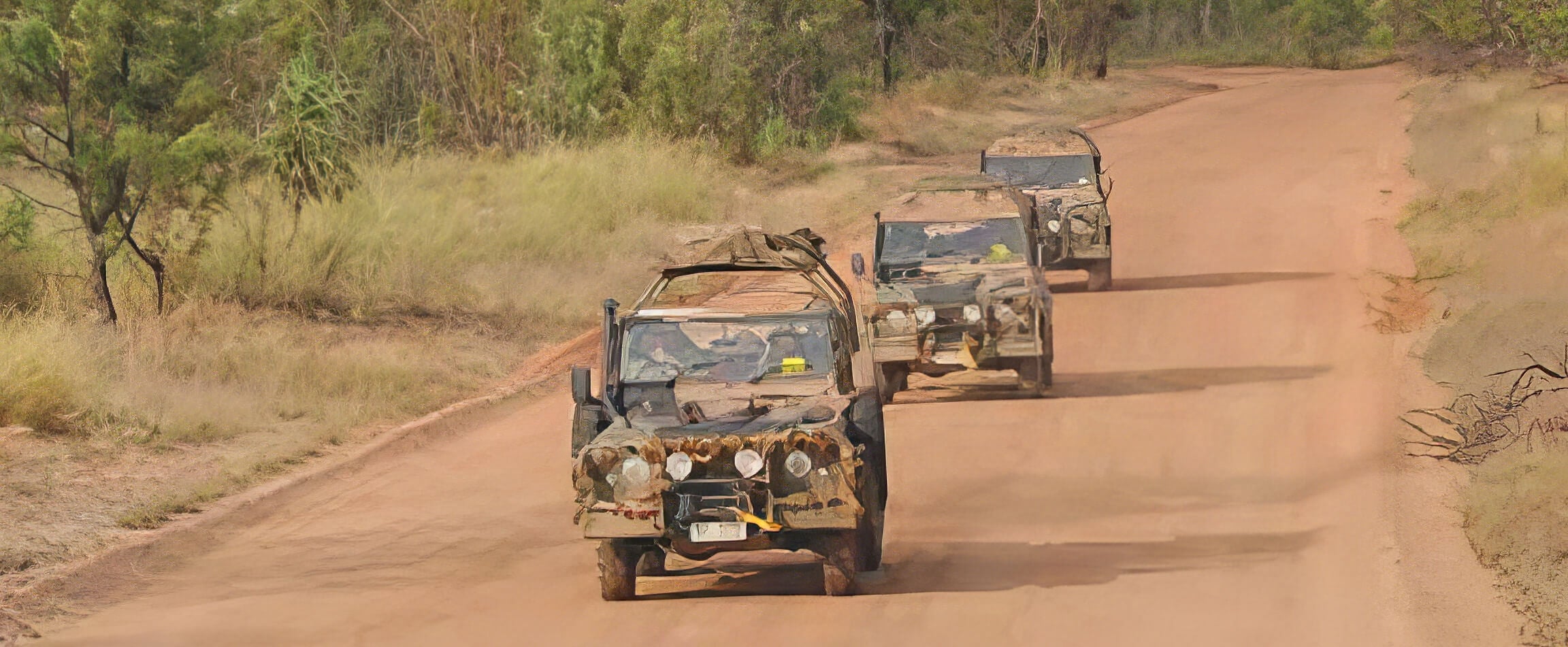How the Perentie became the world’s most indestructible off-road explorer
The Land Rover Perentie was born with one solitary goal: to deliver an off-road vehicle that was so solid and capable it would be virtually indestructible. Named after the desert-dwelling perentie lizard, it was designed to mimic, in mechanical form, the animal’s legendary agility, resilience and adaptability.
The resulting machine was one of the most incredible vehicles to have ever driven this Earth. Seeing service on a total of twenty-one peacekeeping missions, from 1990 to the mid 2010s, it served in some of the most war-ravaged regions on the planet, including Rwanda, Yugoslavia, Sierra Leone, Somalia, Iraq, Afghanistan and East Timor.
To this day, there remains no vehicle on the planet with greater capability – and with their military days behind them, they are now being converted by Arksen's overland department into incredible off-roadrecreational vehicles for private use; a legitimate legend of military might that you can legally drive on the road – but which is still far more at home on the rocks.
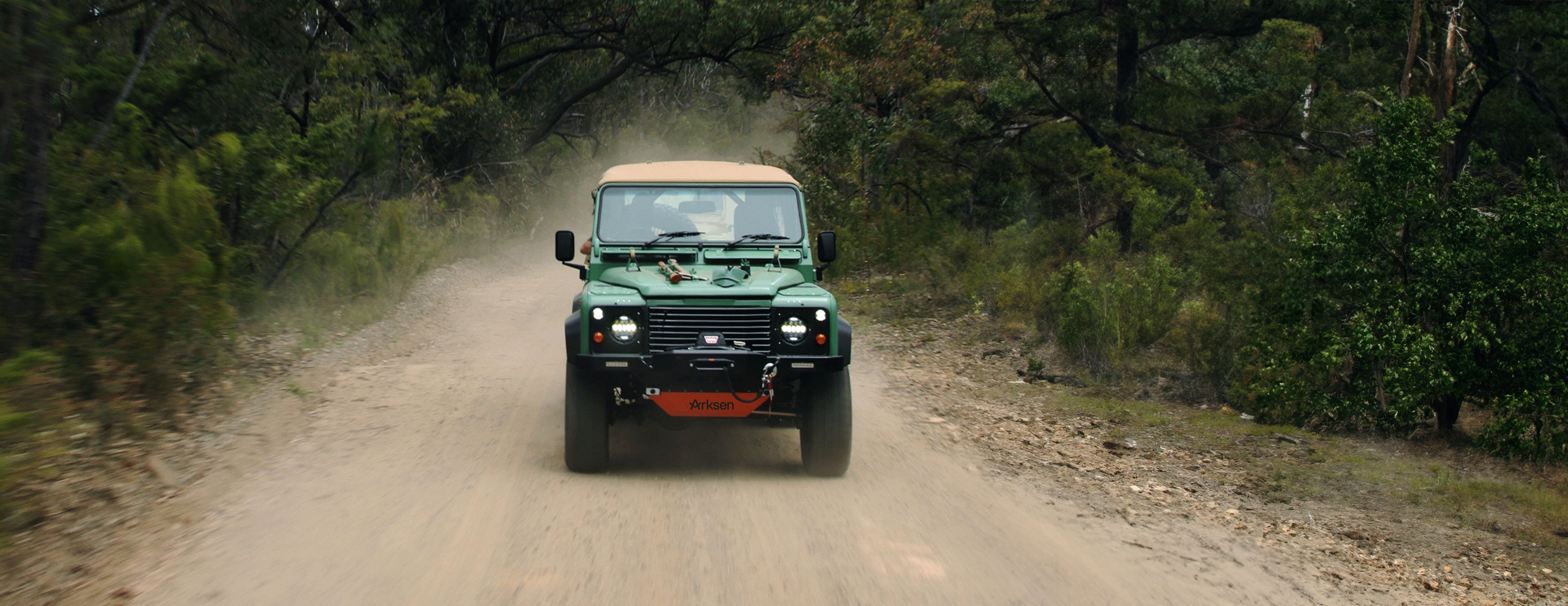
Extreme off-road vehicle
The Perentie project began when the Australian army sought a vehicle to replace its Land Rover Series 2, 2a and 3 fleet in the early 1980s. They received proposals from Mercedes-Benz, Jeep and Land Rover and shortlisted five vehicles for trials, putting them through their paces at two secret army training and proving ground locations near Melbourne.
Archive photos and video show the prototype machines diving into sand dunes, flying high over jumps and submerging waist-deep in water to test them for whatever a war zone might throw at them. After some of the most extreme durability trials imaginable, Land Rover’s design proved the toughest and was given the green light for production.
The Perentie resembled its civilian counterpart, the D110, but heavy modifications took things to another level. On the chassis itself, the rear was adapted to accept an under-slung spare wheel, the fuel tanks were placed under the seats, the entire frame was galvanized for rust protection and the bodywork was finished in highly durable polyurethane paint.
The standard Land Rover engine was deemed incapable of coping with such extremes so the Perentie was instead fitted with unit designed for heavy-duty trucks. The 3.9-litre four-cylinder diesel 4BD1, provided by Isuzu, had rock-solid reliability and durability, consistently high torque and was a perfect fit within the chassis design.
The high-performance powerplant was coupled to an uprated Land Rover LT95A four-speed gearbox and a huge Salisbury 8HA rear differential, which like the engine was based on a design more often found on hauler trucks. The air intake was also improved, modifications were made for noise reduction and the exhaust was routed along the side of the chassis.
The standard coil spring suspension was beefed up too and the vehicle came with some innovative extras – including a rock-solid rear bar to hold up to four jerry cans of fuel and a night convoy driving system, which shone a small light hidden under the chassis onto the white-painted back plate of the rear differential to guide the way.
The drivetrain offered exceptional torque, enabling it to run at exceptionally slow speeds to crawl over rocks and rough terrain yet still reach an impressive maximum speed of 115km/h. When it came to climbing, gradeability of 60 percent gave it the capability for continuous climbs of around 31 degrees – pretty much the steepest any vehicle can climb.
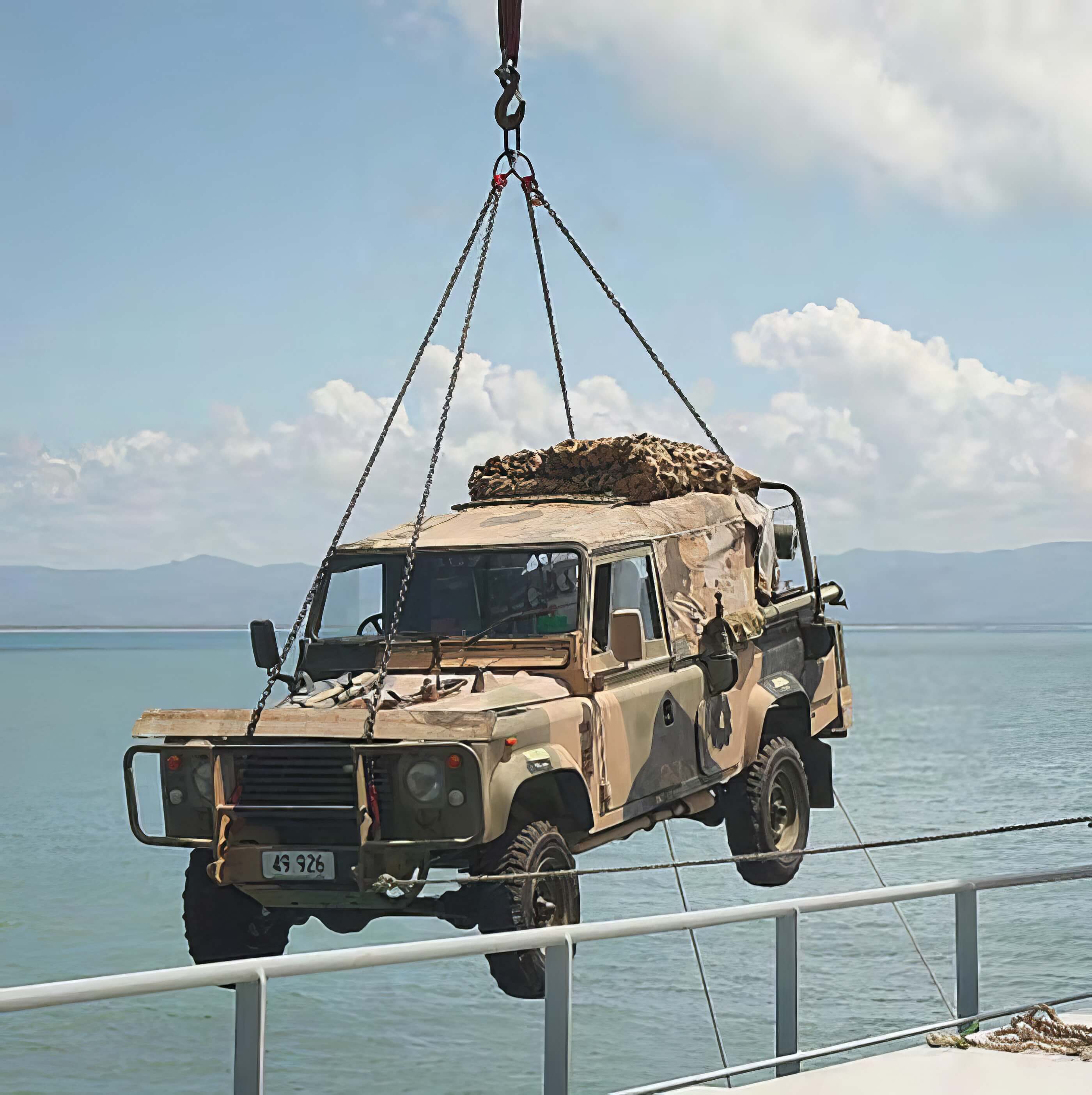
Perentie in action
The initial order was for a total of 2,900 vehicles, which would be delivered over a multi-year period. Of these, 2,500 would be 4x4 vehicles capable of carrying a one-tonne payload in six different configurations, and 400 would be six-wheeled 6x6 machines to serve as cargo trucks, artillery vehicles and ambulances.
The first 4x4 Perenties went into service in 1987 and included soft-tops, which were used as cargo vehicles, personnel carriers and radio units; hard-tops for survey vehicles and mobile command posts; and longer station wagons, with extended capacity for higher numbers of troops, put into use as personnel carriers and personnel commanders’ vehicles.
The ‘standard' 4x4 machine was capable of carrying a tonne of general cargo or six troops as well as towing a trailer weighing up to 900kg. This was the machine used by the greatest variety of units and became the general workhorse of the Australian army, a trusty and reliable member of the team.
The Fitted for Radio (FFR) version was similar but carried just four personnel, due to the weight of the comms equipment, and was fitted with an unusual scooped tailgate and two antenna mounts on each side. The Regional Force Surveillance Vehicles (RFSV), meanwhile, carried three people and had modified roll-over protection, bull bar and a raised air intake.
The station wagons, with their extended wheelbase, were capable of carrying up to nine passengers on bench seats. They came with a single side hinged rear door for quick loading of the troops, a 'safari' roof and a 28v auxiliary electrical system with a bank of batteries, set inside a special enclosure behind the rear seat.
The incredible six-wheeler was designed to carry double the payload and double the troops, while also towing a trailer of up to 1.5 tonnes. The ambulance version had a steel-framed fibreglass modular body which had a lift-up door, space to manage four stretchered patients or eight seated casualties and was even equipped with the luxury of air-conditioning.
Things became even more radical with the Long-Range Patrol truck, which was used to for medium and long-range reconnaissance. The two-seat, doorless machine carried a crew of three with all their stores and equipment and had a low-profile tent-style canopy that could be fitted over the open crew area. It also had mounts for two machine guns.
Last but not least, the Air Defence version had the appearance of a ‘regular’ Perentie Station Wagon with its robust aluminium body, racking and framework covered by a canvas canopy, but it was designed to carry the Rapier or RBS-70 anti-aircraft missile system and to tow the Rapier missile trailer units.
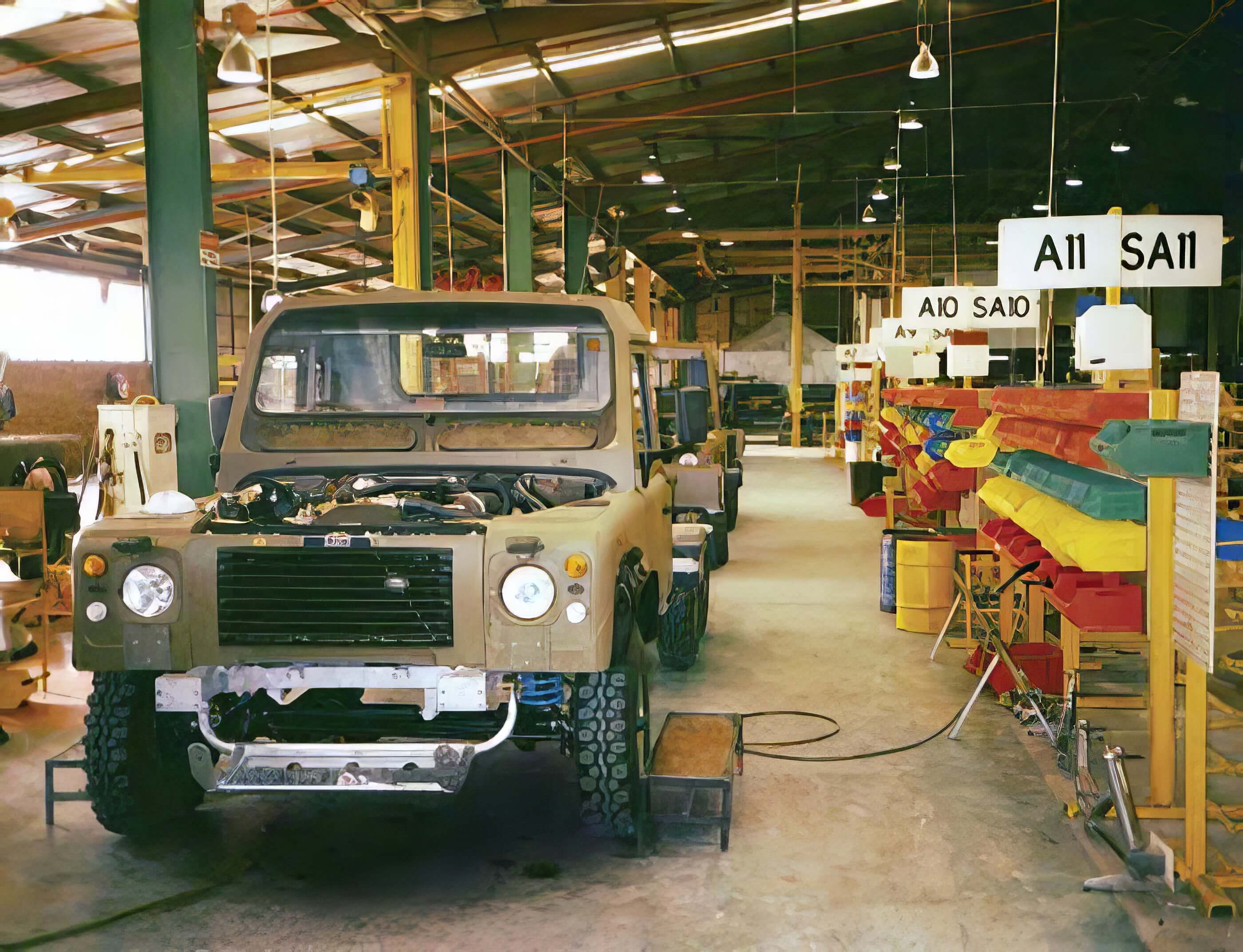
A modern off-road machine
The Australian army’s fleet continued to grow over time, rising to 3,700 by 1992, with a final order taking it up to almost 4,000. The original vehicles came off the production line with plain olive canopies but later models received a camouflage makeover, which became the standard over time, and in the end, there were more than a dozen different variants.
During service, the Perentie earned a reputation as an exceptionally capable off-road vehicle for all conditions. Sturdy, simple to maintain and able to cope with rough, hot and dusty environments, it also had a relatively simple mechanical layout which made it easy to maintain in remote regions.
They have become prized by off-road experts for their ruggedness and military provenance and custom restorations and conversions have seen them turned into commercial vehicles and premium campers, capable of taking on the toughest journeys including the Gunbattle Highway, Canning Stock Route and the never-ending Simpson Desert Crossing.
When the Perentie’s period of military service concluded more than a decade ago, Arksen decided that these incredible vehicles could not be left to rust – not that they would even have been able to, given their galvanised coating. Instead, they decided that a machine with this level of capability had to be re-imagined for the next generation of explorers.
Cue the P110, the company’s stunning soft-top Perentie , adventure prepped or expedition ready. Re-engineered in Australia with meticulous attention to detail, it breathes new life into what is now an overlanding icon with a full ground-up, body-off restoration, extensive upgrades and high-tech modernisation.
The mighty Isuzu engine is now turbocharged, while power steering and carefully tuned clutch efforts make for easier driving on and off-road. It is equipped with extra-tough 33-inch tires, adjustable suspension an uprated driveline and modified transfer box, which enhances both capability and reliability for off-grid confidence.
The interior is a world away from the army days, with a premium retrim, air conditioning and touchscreen audio. Soundproofing, raptor coating and extra storage provide added refinement, while the bespoke Arksen canvas can be rolled up or even removed altogether to take in the open air. A machine originally built for war, now re-imagined for adventure.
